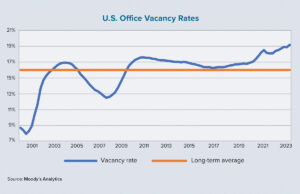In the current reality posed by COVID-19, commercial mortgage brokers will need to find ways to get through hard times. One way to remain relevant is to master the art of rescue financing. Many of your clients will need emergency funds to stave off foreclosure and protect personal assets.
Emergency financing can be particularly useful for your client to gain leverage with a lender when modifying existing loan terms. The borrower, with the help of an investor that provides rescue financing, may be able to obtain an interest rate reduction, an extended maturity date and potentially even the release from a personal loan guarantee. Even if the personal guarantee remains, however, the borrower will more likely be able to repay the debt under the modified terms and thereby protect their personal assets.
Rescue financing, in effect, works like bridge equity, a temporary infusion of cash from an investor that will eventually be bought out. The borrower will put structured capital in place for up to, say, three years. That is more than enough time for real estate markets to stabilize and for the borrower’s property to return to its prepandemic value. The net result is that the borrower can avoid foreclosure and protect private assets that they put at risk in signing off on a personal loan guarantee. There are many ways, however, to structure rescue-financing packages.
Rescue financing, in effect, works like bridge equity, a temporary infusion of cash from an investor that will eventually be bought out.
Structuring deals
For any investor that comes to the rescue, these deals carry various risk levels. Until commercial real estate markets find a bottom, many investors will likely want to hedge their downside risk as much as possible. The least risky proposition for an investor would be to require the senior lender to subordinate their debt to the rescue financing. In this case, the investor could offer a loan with soft terms, such as a single-payment loan at 3% interest due in five years, along with an equity kicker that is a common provision for rescue financing.
In return for granting the borrower a loan with soft terms, the investor could negotiate the right to purchase common membership interests in a limited liability company (LLC) that would be set up as part of the deal. This would serve as an equity kicker and the LLC could make a guaranteed payment, as defined in Internal Revenue Section 707(c), as a priority distribution in order to make up for the below-market rate on the investor’s loan.
Under some circumstances, the lender may agree to subordinate their loan, given that the terms of the rescue financing would be favorable and the property owner would be using the money to stabilize the lender’s collateral. By getting the senior lender to subordinate, the investor’s return on capital is virtually assured in any scenario. The actual return would depend on how much equity is created after the property owner stabilizes and ultimately sells the asset within the next few years.
The next step up the risk ladder for the rescue investor is to provide funds that are on equal footing, or “pari passu,” with the existing mortgage. In this case, the investor and the senior lender would need an intercreditor agreement that provides for additional funding. It would contain equal-priority position on the title and other provisions. The agreement would spell out the governing rights and obligations of all parties, as well as a dispute-resolution process between the senior lender and rescue investor.
This agreement would effectively extend credit to the borrower under the senior lender’s first mortgage without the senior lender having to advance any additional funds. In the event of nonpayment and subsequent foreclosure, the rescue investor and senior lender would bear any losses in proportion to the funds they advanced under their shared first mortgage.
Another option is to divide the senior loan into A and B notes. The investor would inject new capital into the property. The senior lender would agree to allocate a portion of the principal balance under the senior loan to an A note. The A note would continue to be secured by a first mortgage on the property. Furthermore, the parties also could agree to modify the terms of the A note by, for example, reducing the interest rate, extending the maturity date, and/or releasing the borrower from all or a portion of the loan guarantee.
Likewise, a portion of the senior lender’s loan balance would be allocated to a B note. Often referred to as a “hope note” or “hope certificate,” the B note would be pushed down to a lower-priority position in the property’s capital stack. The repayment terms would be especially soft. The principal under the B note, for example, would accrue interest until the property’s net operating income reaches a certain amount, or it could be paid off only if the property is sold for an agreed-upon minimum amount. Otherwise, the senior lender would agree to write off all or a portion of the B note.
Debt vs. equity
Rescue financing also can be structured as a junior or mezzanine loan. With a junior loan, the investor would essentially be placing a second mortgage on the property. The senior lender would need to agree to a second lien on the property and enter into an intercreditor agreement. With a mezzanine loan, the investor would secure repayment using a collateral pledge and common membership interest in a yet-to-be-created LLC.
Investors also could make equity contributions in a common LLC. The advantage of a direct equity investment is that it would likely require no intercreditor agreement with the senior lender. The investor might acquire preferred membership interests in the LLC. Some investors also might accept a common equity position. Although that would be the best-case scenario for the property owner, it runs contrary to many investors’ expectations. Equity investors typically want to recoup their investments first with a preferred rate of return.
In addition to what has been discussed above, there are a number of ways to structure rescue financing as a straight real estate transaction. An investor, for example, can purchase the land or portions of the property and lease them back to the seller — a structure that can work not only to stabilize the property but also to provide certain federal tax advantages for the investor.
Before many lenders agree to workout negotiations, however, they may require that borrowers execute a prenegotiation agreement (PNA). The purpose of a PNA is to manage a borrower’s and lender’s expectations, and set the ground rules for how negotiations are to take place. Although PNAs may include any number of provisions, they are usually nonbinding discussions that allow the lender and your client to freely discuss options. Normally, the borrower will acknowledge that the loan is in default. The lender will often agree not to foreclose on the property while negotiations are ongoing.
For the foreseeable future, commercial real estate owners will need to raise rescue financing. By understanding how loan workouts are conducted, and by identifying new sources of rescue financing and new strategies for structuring such deals to everyone’s mutual benefit, commercial mortgage brokers provide a valuable and potentially lucrative service. Moreover, you can remain relevant during what is expected to be a hard time for all commercial real estate professionals. ●
Author
-
Ron Zimmerman is president of NetLeaseX Capital LLC, an investment-banking and capital-markets advisory company in Cincinnati. Zimmerman specializes in sourcing and structuring debt and equity financing for commercial real estate investors and developers. He has more than 33 years of experience in the commercial and residential real estate markets and is a licensed real estate broker.





